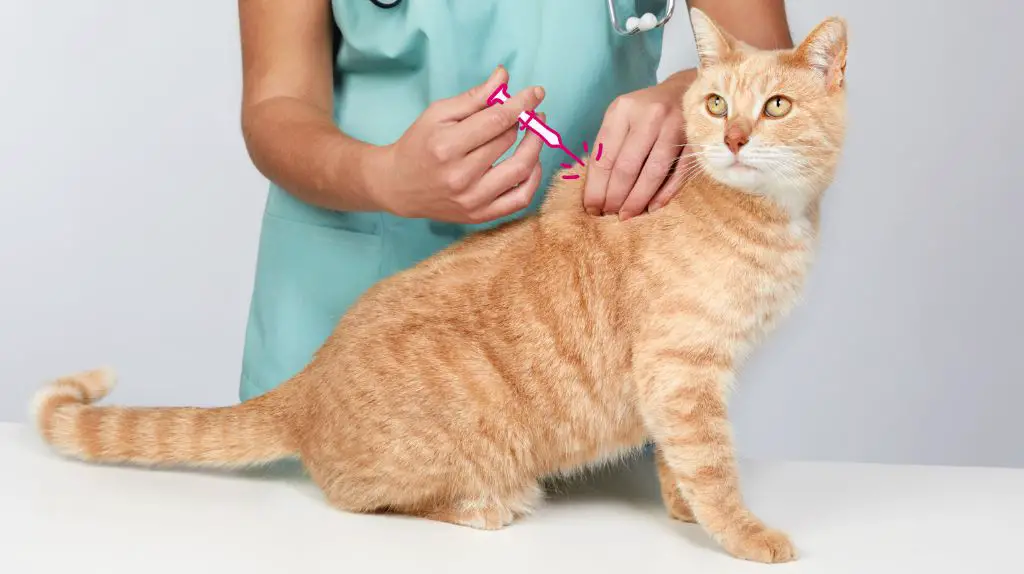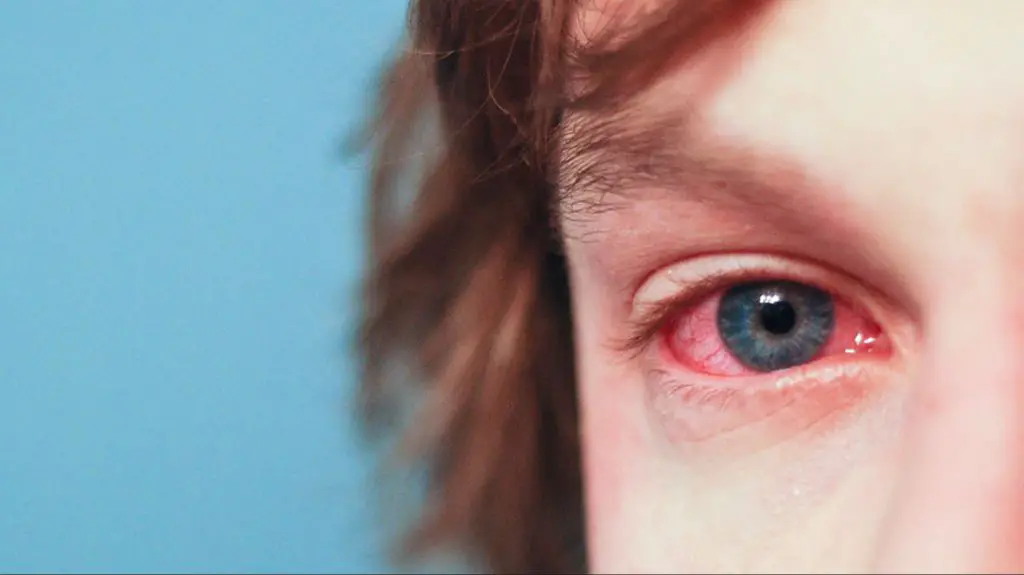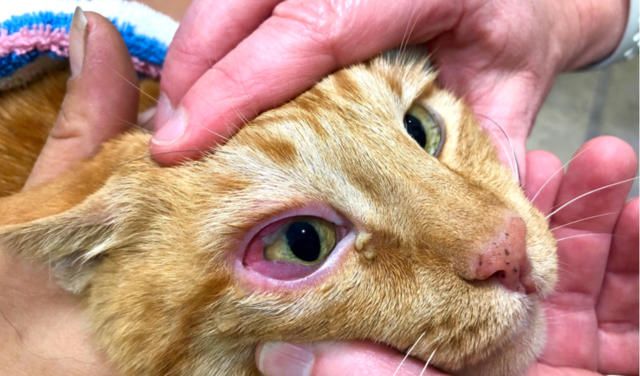What is Cat Conjunctivitis?
Feline viral conjunctivitis is an inflammatory condition that affects a cat’s eyes and surrounding tissues. It is a highly contagious viral infection that spreads easily between cats through contact with eye discharge from infected cats. The virus infects the conjunctiva, which is the thin membrane lining the inside of the eyelids and covering the white part of the eyes.
Common symptoms of conjunctivitis in cats include:
- Redness of the eyes
- Swollen and watery eyes
- Green, yellow, or white eye discharge
- Rubbing or scratching the eyes
- Crusty eyes, especially in the morning
- Squinting or blinking excessively

The virus is spread through direct contact with an infected cat’s eye discharge, saliva, or respiratory secretions. It can also be transmitted indirectly by touching contaminated surfaces like food bowls, bedding, or toys. The incubation period is 2-10 days before symptoms appear. Prompt treatment and isolation of infected cats is important to limit the spread of this contagious infection.
Can Humans Get Cat Conjunctivitis?
The viruses and bacteria that cause conjunctivitis (also known as pink eye) in cats cannot be transmitted to humans. Feline herpesvirus (FHV-1) and Chlamydia felis, two common causes of conjunctivitis in cats, only infect cats and do not pose a risk to human health (Hill’s Pet Nutrition). So while cat conjunctivitis may look uncomfortable, cat owners don’t need to worry about contracting the infection from their pets.
However, humans can experience some eye irritation from close contact with a cat that has infectious conjunctivitis. The discharge from a cat’s infected eyes contains viruses, bacteria, or irritants that can cause temporary irritation if they come into contact with a person’s eyes. This would likely cause redness, itchiness, or discomfort, but would not represent an active infection (PetMD).
To avoid eye irritation, cat owners should wash their hands after touching an infected cat’s eyes or face. Keeping the cat’s face clean can also help reduce spread. Any eye irritation in humans should clear up on its own, but seeing an optometrist or ophthalmologist if symptoms persist.
Preventing Conjunctivitis in Cats
There are several steps cat owners can take to help prevent conjunctivitis in their feline companions:
Vaccination is important – Routine vaccinations, as recommended by your vet, help protect against common infectious causes of conjunctivitis like herpesvirus and calicivirus (Source).

Keep cats indoors – Keeping your cat indoors prevents exposure to infectious causes of conjunctivitis from other outdoor cats (Source).
Disinfect the home – Use pet-safe disinfectants to regularly clean litter boxes, food bowls, bedding, and other areas your cat frequents to kill infectious agents (Source).
Treating Conjunctivitis in Cats
There are several treatment options for conjunctivitis in cats recommended by veterinarians:
- Anti-viral medications prescribed by the vet, such as idoxuridine 0.1% and cidofovir 0.2%, to treat viral conjunctivitis if symptoms don’t improve on their own (Source)
- Applying antibiotic eye ointment or drops prescribed by the vet 3-4 times per day for 2-3 weeks to treat bacterial conjunctivitis (Source)
- Keeping the eyes clean by gently wiping away any discharge with a warm, wet cloth
It’s important to follow the treatment plan from your veterinarian and not stop applying eye medications too soon, even if symptoms start improving. Completing the full course of treatment helps eliminate the infection entirely.
Conjunctivitis-Like Symptoms in Humans
While humans cannot get the exact type of conjunctivitis that cats suffer from, cats can cause symptoms in human eyes that resemble conjunctivitis. One of the most common issues is allergic reactions.
People who are allergic to cats may experience red, itchy, watery eyes when exposed to cat dander and proteins in cat saliva and urine (Source). This allergic reaction causes inflammation of the conjunctiva, the thin membrane lining the inside of the eyelids and covering the white part of the eye. The result is irritation and discomfort that mimics bacterial conjunctivitis.

While humans cannot catch the strain of conjunctivitis that infects cats, there is one type of conjunctivitis that can spread between cats and humans. Chlamydia conjunctivitis is a bacterial infection that can pass between cats and humans through direct contact with eye discharge from an infected cat (Source). This type of conjunctivitis causes redness, swelling, and discharge in humans.
To prevent contracting conjunctivitis from cats, proper hand hygiene is key. Wash hands thoroughly after touching cats, especially around the eyes. Avoid rubbing eyes after petting cats. Keeping cats’ eyes clean can also help reduce spread of infection.
Preventing Human Eye Irritation
Here are some tips for avoiding eye irritation when living with cats:
Wash your hands thoroughly with soap and water after petting or handling cats, especially if the cat is sick. Cat saliva, dander, and bodily secretions can carry bacteria that may cause eye infections in humans. Washing hands frequently helps remove allergens and prevent hand-to-eye transfer of germs.
Avoid rubbing or touching your eyes after contact with cats. Refrain from itching, rubbing, or touching eyes or face until after hands have been washed. This prevents accidentally spreading contaminants from cats into the eyes.
Isolate sick cats displaying symptoms like eye discharge or conjunctivitis from other household pets and humans. Keep sick cats confined to one room and wash hands after handling to prevent the spread of infection. Disinfect surfaces the sick cat contacted.
Being diligent about hand hygiene and avoiding eye contact after interacting with cats, especially sick cats, can help prevent irritation or infections from spreading to human eyes.
Treating Human Eye Irritation
If exposure to a cat causes irritation in human eyes, there are a few treatment options to help relieve symptoms:
Allergy medications such as antihistamine eye drops like Zaditor or Alaway can help relieve itchy, watery, swollen eyes caused by cat allergies. Antihistamines block the histamine chemical responsible for allergy symptoms. Over-the-counter artificial tear eye drops can also help soothe eye irritation.
If a bacterial infection is the cause of the eye irritation, antibiotic eye drops or ointments may be prescribed. Some common antibiotic eye drops used for bacterial conjunctivitis (pink eye) include Polytrim, Moxeza, and Vigamox. Bacterial eye infections should be treated under the guidance of a doctor.
Severe or persistent eye irritation after exposure to a cat warrants a visit to an allergist or ophthalmologist. They can provide specialized testing and treatment options to help manage cat allergies affecting the eyes.
Along with medication, avoiding rubbing the eyes, washing hands after contact with cats, and limiting exposure can help prevent and treat eye irritation from cats.
When to See a Doctor
In most cases, minor eye irritation or redness will clear up on its own within a few days. However, it’s important to see your doctor if symptoms persist or worsen. Some signs that warrant medical attention include:
Persistent redness or irritation – Redness, pain, itching or inflammation in one or both eyes that does not improve after 1-2 days may indicate an infection or more serious condition that requires treatment.
Thick discharge or mucus – Yellow, green or white discharge draining from the eye could signal a bacterial infection like conjunctivitis.
Blurred vision – If eye irritation is accompanied by a decline in vision sharpness, see an ophthalmologist. This symptom may indicate a severe problem like uveitis.
Light sensitivity – Discomfort or pain when exposed to normal light suggests inflammation inside the eye that needs assessment.
Inability to open eyes – Severe swelling, crusting or matting of the eyelids could indicate a serious infection and warrants prompt medical care.
When red or irritated eyes are coupled with vision changes or significant discharge, it’s crucial to visit your eye doctor for a full exam and accurate diagnosis. Leaving certain eye conditions untreated can lead to permanent damage and vision loss.
Caring for a Cat With Conjunctivitis
If your cat has been diagnosed with conjunctivitis, there are some steps you can take at home to help care for your cat and limit the spread of infection:
Isolate your cat from other pets – Keep your infected cat separated from any other pets in the home, especially if they sleep in close quarters or share food/water bowls. Conjunctivitis is very contagious between cats.

Keep their eyes clean – Gently wipe away any discharge from around your cat’s eyes using a warm, damp cloth. This can help prevent the infection from worsening.
Provide medication – Make sure to administer any prescribed eye drops or ointments as directed by your veterinarian, usually several times per day. Completing the full course of treatment is important for resolving the infection.
Monitor for improvement – Keep an eye on your cat’s symptoms and contact your vet if the conjunctivitis seems to be getting worse or not improving after several days of treatment.
With proper care and medication, feline conjunctivitis will often clear up within 1-2 weeks. Be diligent about isolation and hygiene measures to help avoid spreading the infection to other pets or humans in the home.
Summary
Feline conjunctivitis cannot directly spread from cats to humans. However, humans in close contact with infected cats can develop eye irritation or infection from exposure to the same bacteria or viruses causing conjunctivitis in the cat. Proper treatment and prevention measures for cats with conjunctivitis, along with good hygiene practices for humans, can help avoid the spread of infection and irritation.
Conjunctivitis in cats is often caused by contagious viruses or bacteria. While humans cannot catch the exact same conjunctivitis infection from a cat, we can develop eye irritation, redness, discharge or infection from close exposure to these pathogens. Practicing good hand washing hygiene after touching the eyes of an infected cat can help prevent the spread of bacteria and viruses to humans.
Treating conjunctivitis in cats involves antibiotic eye drops/ointment and keeping their eyes clean. Preventing conjunctivitis involves keeping cats up to date on vaccines, parasite control and avoiding exposure to upper respiratory infections. If a human develops eye irritation after contact with an infected cat, they should practice good hygiene and see a doctor if symptoms persist or get worse.
In summary, feline conjunctivitis itself does not spread directly to humans. But the underlying pathogens can lead to human eye problems. Proper treatment and prevention measures for cats, combined with good hygiene for humans, is the best way to avoid complications.

